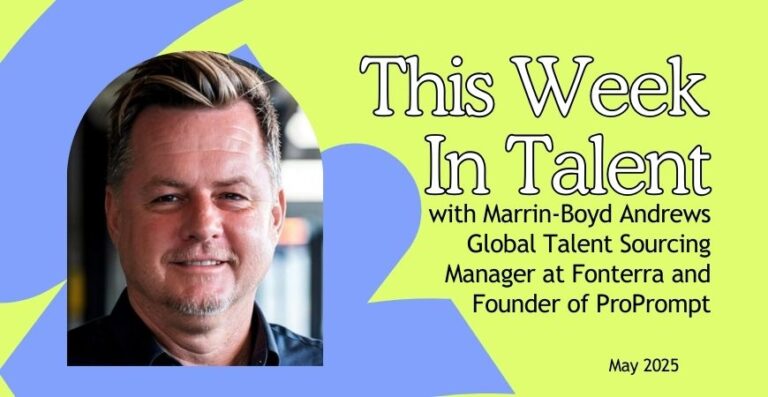Whether or not you believe the Great Resignation is real, there are a number of things that are for certain. There are currently more job vacancies advertised than ever before, there are very low levels of job applicants, even lower unemployment rates, and limited talent mobility. And this is on top of the previously well-documented skills shortages across most industries.
All of these conditions are making it extremely challenging for organisations to attract and recruit in-demand talent, so it’s important to consider how to gain that competitive edge in the toughest labour market in decades. Organisations need to find a way to stand out from competitors across all industries and capture the attention of talent, in order to even put forward their pitch.
Every successful recruitment strategy should be underpinned by a strong attraction strategy, and be personalised, using technology to target the right candidates, both active and passive, via a range of channels.
If you are to attract and retain the best people in the marketplace with the right values, mindsets and skills, you need to be able to source from more deeply within the labour market. You need to make sure you are selecting from the best in market, not just the best who have applied for your jobs.
We talk a lot about attracting active and passive talent, but in order to do that effectively we need to nurture prospective talent regardless of where they fall in the job-seeking lifecycle. We need to consider what tactics to use at each stage of the talent acquisition funnel and how branding and sourcing play into it.
We need to consider the entire population of potential talent and where they may be in their career cycle, as well as better understand their motivations and perceptions of your organisation as an employer, to guide us as to how to build relationships.

This is the new candidate funnel – marketing first to potential talent to encourage them to start considering your organisation, before converting them into an applicant. This is particularly important in today’s cut-throat recruitment market, as the few active candidates aren’t active for long!
By increasing the level of awareness of your company as an employer of choice, we widen the top of the funnel, allowing a greater flow of talent through the funnel to ultimately increase the number of qualified and suitable candidates at the bottom of the funnel. This will ensure your recruitment teams are filling roles with the best talent in the marketplace, reducing the time it takes to do that, and allowing them to focus on providing the best possible experience to candidates and hiring managers.
Seeing ‘proactive attraction’ from the candidate’s perspective
To better understand proactive attraction, let’s first put ourselves in the shoes of top talent.
A highly-skilled and in-demand professional begins the year in a good place, in no way considering a career change. But by mid-year they begin to feel an itch: perhaps their role is changing in a way they hadn’t expected, or their company isn’t performing well. By the end of the year that itch has turned into action – they’re casually browsing positions and signing up for job alerts.
In the past, Employer Brand and Talent Acquisition teams may have only been interested in the December version of this professional. But proactive attraction targets the June and even the January iteration; it engages at every stage of the consideration cycle, so when December rolls around (or indeed an earlier month), you’ve positioned yourself as the preferred employer.
From a content perspective, getting a job ad in front of this person in January probably wouldn’t elicit a click. An article about ‘10 awesome things [your company] is doing in AI’ (or another relevant/trending topic to your target audience) however, is far more likely to pique their interest when casually browsing LinkedIn, which will covertly sell your organisation as an attractive workplace.
To be effective, you need to tailor your message to suit the stage of consideration. You need to think about being in the right place, at the right time, with the right message.
Important considerations when building out your attraction strategy
For those who are ready for it, I’d be creating segment-based go-to-market plans (ones for each of the critical talent segments) designed to move key audiences along the consideration journey – the funnel.
- At the top, what are those activities and channels that will be used to build awareness of your organisation as an employer, brand affinity and understanding of your EVP?
- For those at the consideration and interest level, how are you building talent communities or pools and what are you doing to nurture these relationships until the right role opens up/ talent is ready to move?
- And what are the channels, job boards and tactics that will be used to drive job applications and support recruitment campaigns as needed?
By understanding the journey, we can also be clear about the goal of each activity. What are you trying to do with that post/activation etc.? What is the best call to action? Where is the best place to direct that click? What does conversion or success look like for each activity?
It sounds tricky, but it doesn’t need to be. It’s about having a clear attraction strategy for each of the key audiences you are trying to recruit; a deliberate plan for each of your marketing activities within them, and clarity on how you’re going to use the channel/content to push talent along the journey. It’s about having a clear measurement plan and knowing what success looks like at each stage, so you can prove your ROI.
This is how you’ll be most effective in attracting talent in what’s shaping up to be the toughest recruitment market in decades.
Keen to find out more?
Join Brie Mason at ATC2022, together with Clint Williams, Talent Leader at Lion, and Sarah Halaseh-Russo, People Experience at Officeworks, as they discuss the need to gain alignment on a change in EVP mindset and approach, and a redefinition of roles and responsibilities.

This article originally appeared in Employer Brand Mason and has been republished here with permission.
Photo by Jason Goodman on Unsplash







